John Hurrell – 1 November, 2018
Though embedded in traditional skills (raranga) and a Māori perspective (mātauranga), Lander's wit introduces contemporary science, linking Māori genealogy (whakapapa) with other vertically descending works such as twisting DNA shaped ladders suspended from the ceiling, and functional utensils like flat-packs (carrying racks) that cascade down the wall and form a stack on the floor.
Titirangi
Maureen Lander
Flat-Pack Whakapapa
11 August -18 November 2018
This touring show organised by The Dowse Art Museum is on the top floor of Te Uru. Mainly a wall installation of contemporary Māori flax weaving, it has three components: works made by Maureen Lander herself; works she has made in collaboration with other weavers; and projects made by local children. Most of it shares the same format, a sort of starlike (or St. Andrew’s Cross), flat ‘open kete’ shape that is repeated and positioned in a grid on the wall. Within each unit the outer ‘limbs’ are braided (whiri) and compressed, and their branching strands lead into an inner diamond/square that has intricate tartanlike patterns (whakairo).
These are fascinating objects to look at and try and analyse morphologically. They remind you of fans, tennis rackets, or cabbage tree parts. Plus there are the negative shapes of the white wall peeking through.
Though embedded in traditional skills (raranga) and a Māori perspective (mātauranga), Lander’s wit introduces contemporary science, linking Māori genealogy (whakapapa) with other vertically descending works such as twisting DNA shaped ladders suspended from the ceiling, and functional utensils like flat-packs (carrying racks) that cascade down the wall and form a stack on the floor. We see here with both, the concept of ancestral lines (aho tuku iho) in an unusual, decidedly refreshing, form of linear sculpture—perhaps vaguely in the formal tradition of some of Para Matchitt’s wire sculptures.
Of the large wall works, I like the intricacy of the patterns in the gridded centres very much, especially how you can follow the trajectory of the delicate crisscrossing strands and figure out how they flow from the different peripheral corner braids into the central repetitive configurations.
There is one thing, however, that has gone wrong with this show’s presentation, and that it is the low white plinths placed on the polished concrete floors: dinky little platforms that support the bottom end of the DNA ladders and the pile of ‘stars’. They look dreadfully intrusive. The woven ‘star’ elements should be placed directly on the floor, and the flax ladders should be plugged into holes drilled into the concrete. The installation looks amateurish, and I’m surprised Lander—a seasoned artist of several decades experience—and the institution, allowed it. A case of details being important.
John Hurrell
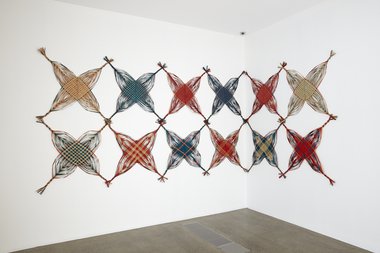
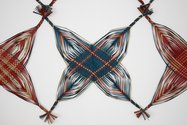
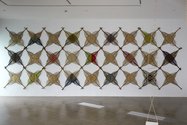
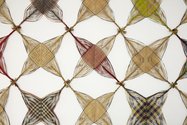

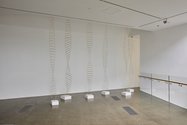


 Advertising in this column
Advertising in this column Two Rooms presents a program of residencies and projects
Two Rooms presents a program of residencies and projects



This Discussion has 0 comments.
Comment
Participate
Register to Participate.
Sign in
Sign in to an existing account.